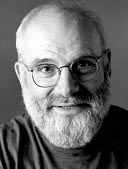- Shopping Bag ( 0 items )
From Barnes & Noble
The Barnes & Noble ReviewThis marvelous autobiographical tale is more about chemistry than the day-to-day doings of its subject, and that may be what gives it its considerable charm.
Evacuated from wartime London at the age of six, Sacks spent four years at a boarding school in the country, where he suffered deeply from neglect and the sadistic cruelty of the headmaster. What sustained him was a budding scientific sensibility, which distracted him from his own misery and focused his gaze on the immutable and minute mysteries of the natural world. After he was returned home, this incipient passion blossomed into a full-blown obsession with chemistry. And here the adventure begins.
Sacks writes: "My first taste was for the spectacular -- the frothings, the incandescences, the stinks and the bangs, which almost define a first entry into chemistry." With a few key texts in hand, the smitten boy sets out systematically to perform for himself all the experiments they describe, determined to live the history of chemistry in himself. He shares that history with us, from Lavoisier's conquest over phlogiston to Davy's elegant dissection of compounds by electrolysis to Dalton's stubborn insistence on the existence of the atom, which inspires in him "a sort of rapture, thinking that the mysterious proportionalities and numbers one saw on a gross scale in the lab might reflect an invisible, infinitesimal, inner world of atoms, dancing, touching, attracting, and combining" -- a glorious epiphany that every lover of chemistry gets to experience for himself.
Sacks is encouraged in his chemical pursuits by a cast of eccentric family members, each with his or her own brand of scientific obsession. The best is Uncle Dave, affectionately dubbed Uncle Tungsten, for he lives and breathes that versatile metal. Oddly, Sacks was not destined to become a chemist. For some reason never fully understood, he and his first love parted ways when he was about 14 or 15, and he ultimately went on to become a renowned neurologist. Nevertheless, we can take solace in knowing that the life-affirming intellectual passion that chemistry imparted to him was not to be wasted. (Amy Bianco)





Overview